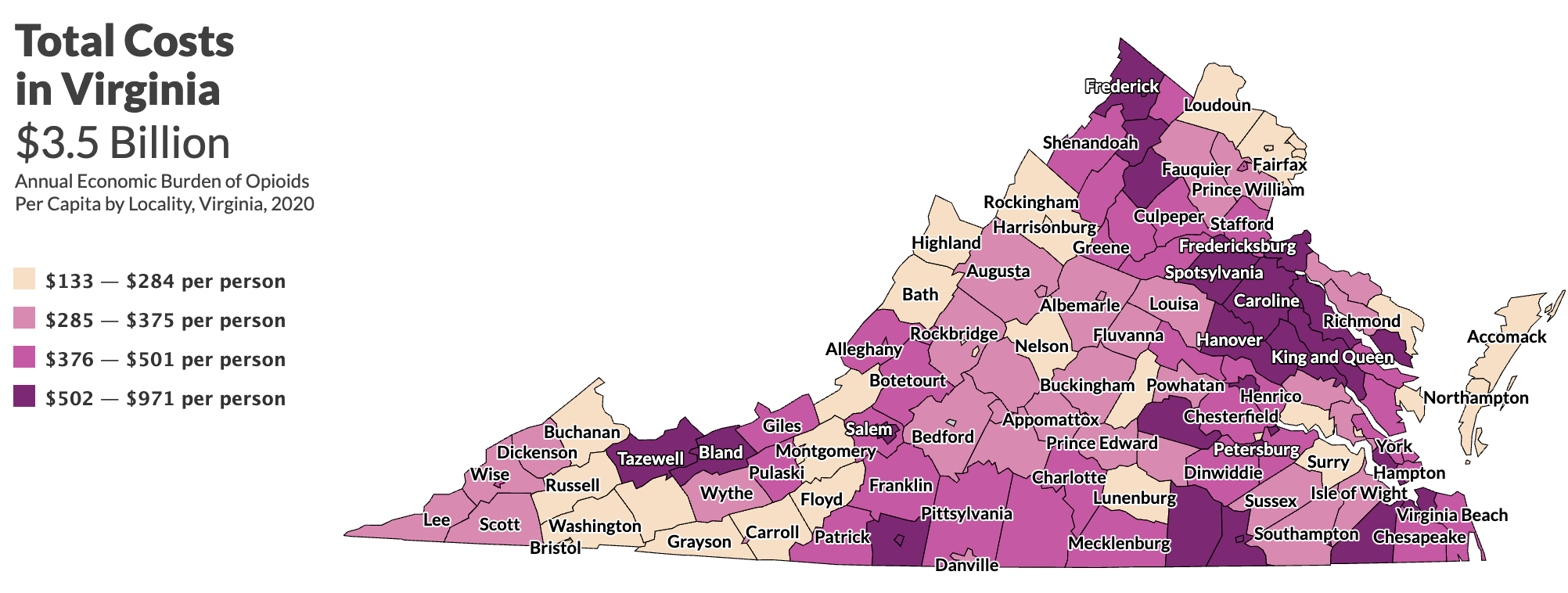The use and abuse of prescription and non-prescription opioids have increased dramatically over the years. In 2016, Virginia Governor Terry McAullife declared the opioid addiction a public health emergency in the Commonwealth.
In 2018, an average of three Virginians died of an opioid overdose daily.
To better understand the impact of the opioid epidemic, The Virginia Department of Health Division of Prevention and Health Promotion commissioned the Center on Society and Health and Altarum, a nonprofit organization that advances health among vulnerable populations, to assess the economic repercussions of opioid-related deaths.
This eight-month study did two things. First, it conducted an analysis of social and neighborhood risk factors of opioid mortality at the county and independent city level.
For example, while the opioid crisis’ prominence in areas like Southwest Virginia, Northern Shenandoah Valley, and the Commonwealth’s larger cities can be partially explained by the overdistribution of prescription opioids and access to illicit drugs, risks are also increased when a locality had a larger share of the population who had a disability, was divorced or separated, or worked in agriculture or extraction industries.
The study also estimated the impact of opioid addiction on workforce productivity in both Virginia localities and the state overall. In addition to the major human cost of the opioid epidemic, the economic cost of the productivity losses in Virginia due to overdose deaths, addiction, and incarceration topped $3.5 billion in 2020.
To learn more about the study’s findings, download the reports below or visit the website: https://costofaddictionvirginia.com
Downloads
An Analysis of Workforce Productivity Loses.
What Predicts Geographic Variation of Opioid Mortality in Virginia?
